Physical Address
304 North Cardinal St.
Dorchester Center, MA 02124
Physical Address
304 North Cardinal St.
Dorchester Center, MA 02124
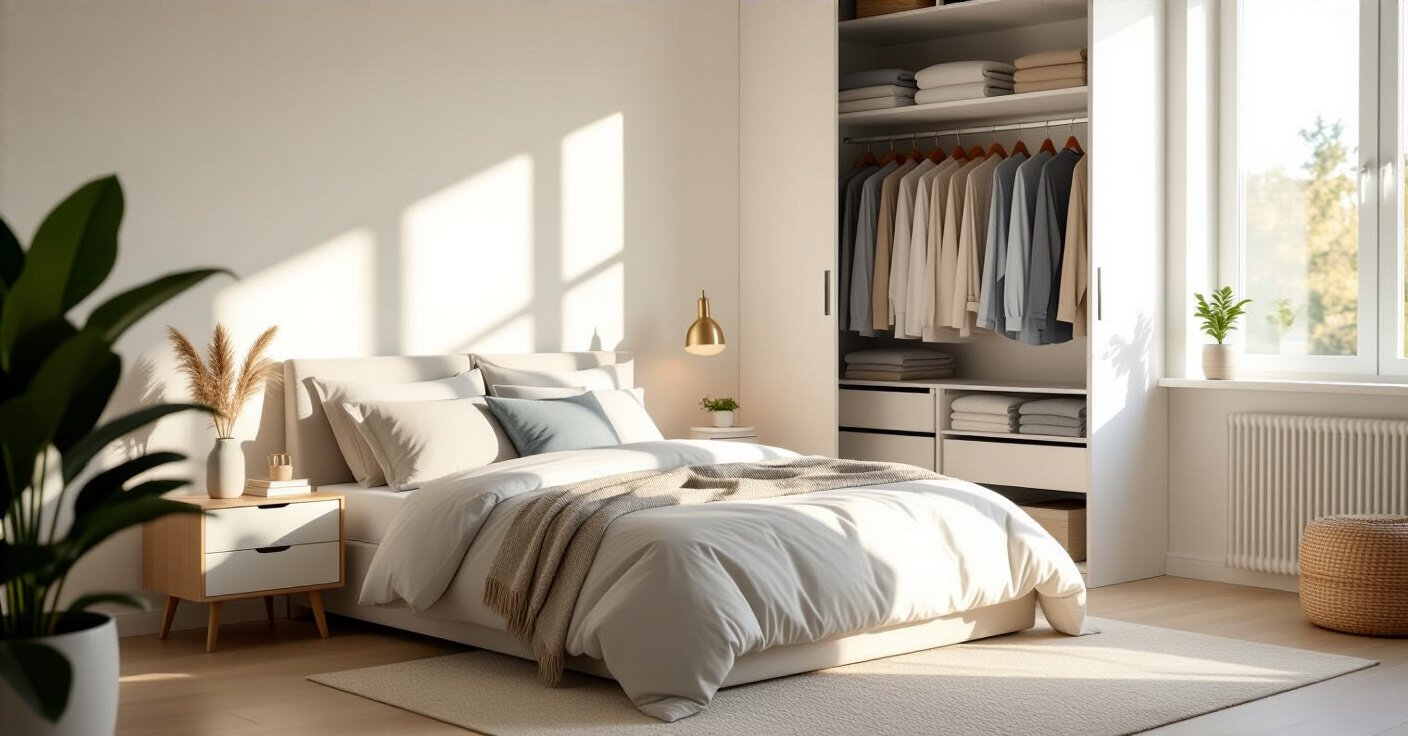
Tired of toy chaos? An early childhood design expert explains 24 genius bedroom storage ideas that go beyond bins. Learn to create a stylish, functional room that fosters independence and calms the clutter for good by using developmental science.
You know the question every single parent asks me, usually in a half-whisper like they’re admitting a deep, dark secret? It’s always some version of: “How do I deal with all this… stuff?” They point to the tidal wave of LEGOs, the mountain of stuffed animals, and the mysterious collection of single socks and glittery rocks taking over their home. It’s overwhelming.
And I have a confession. I used to think the answer was simple: more bins. Cute, colorful, maybe with a label maker. Problem solved, right? Wrong. So, so wrong. I once helped a family spend a fortune on a gorgeous, custom closet system. A week later, I came back and the floor was still a minefield of toys. Why? Because we hadn’t changed the system. We just bought a prettier box to hold the chaos. The real secret isn’t about having more storage; it’s about creating a space that works with your child’s brain, not against it. It’s about turning their room into their first and best teacher.
Before you even think about clicking “add to cart” on that adorable seagrass basket, we have to do the groundwork. This is the part everyone wants to skip, but it’s the only thing that actually works. Think of it as creating the master plan for a calmer, more playful home.
Let’s reframe this. This isn’t about angrily throwing away toys. It’s about a mindful excavation project with your little one. The goal here isn’t just to make space; it’s to teach your child about value and decision-making. We’re not just Marie Kondo-ing; we’re building executive function skills. Grab a few boxes and label them: “Keepsake,” “Play With Now,” and “Toy Library” (for things we’ll rotate later).
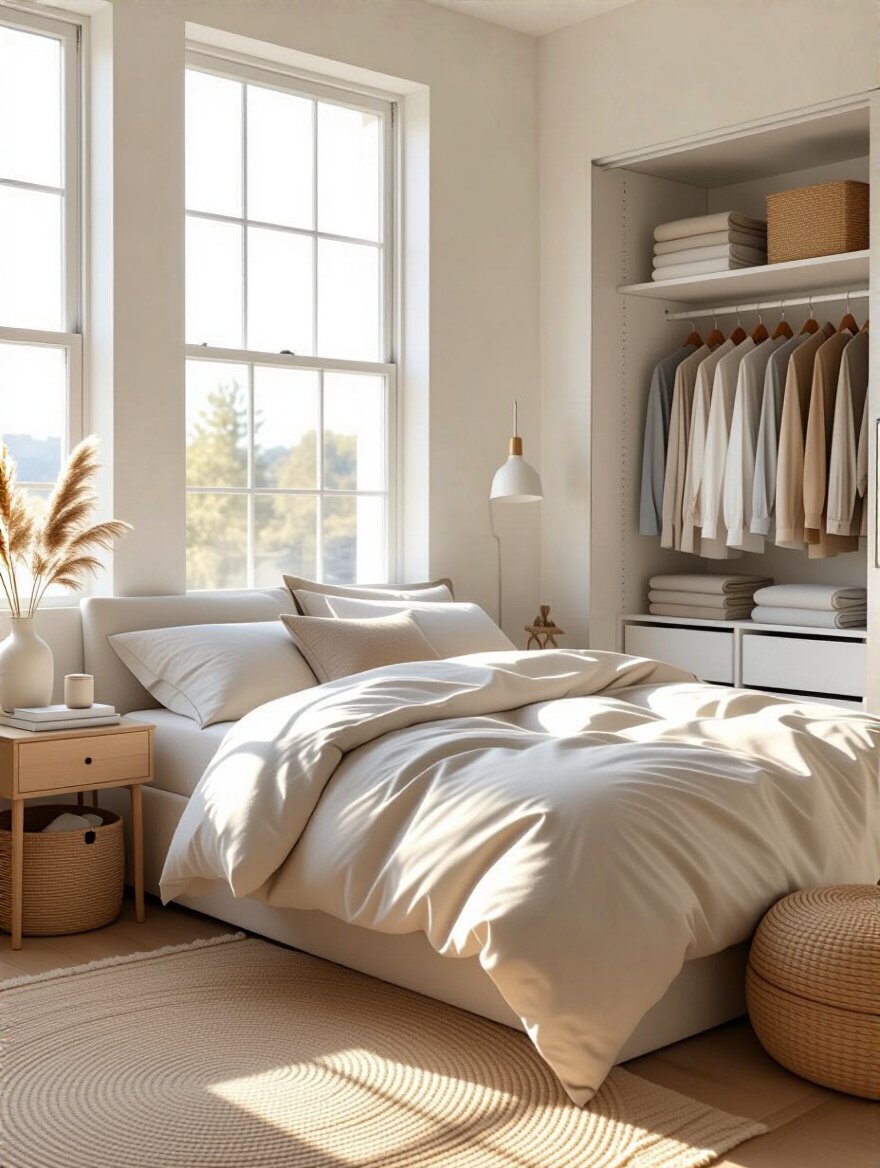
Get down on the floor with your child and pick up one thing at a time. Instead of asking, “Does it spark joy?” try asking, “Does this toy help your brain grow?” or “Is this a super fun friend to play with right now?” This little script change turns a chore into a game of discovery. For one family, we discovered their daughter had five nearly identical unicorn stuffies. By choosing her absolute favorite to keep on her bed and putting the others in the “Toy Library,” she felt in control, and her room could suddenly breathe again. No tears, just empowerment.
Up next, we’ll take our pile of treasures and figure out exactly what kind of homes they need.
Okay, “audit your inventory” sounds so corporate and boring. Let’s call it what it is: a treasure count! Once you have your “keep” pile, it’s time to understand what you’re really dealing with. This step is crucial because it stops you from buying a bookshelf when what you really needed was a deep bin for chunky blocks. For a child, this is a phenomenal, hands-on math lesson in sorting and categorizing.
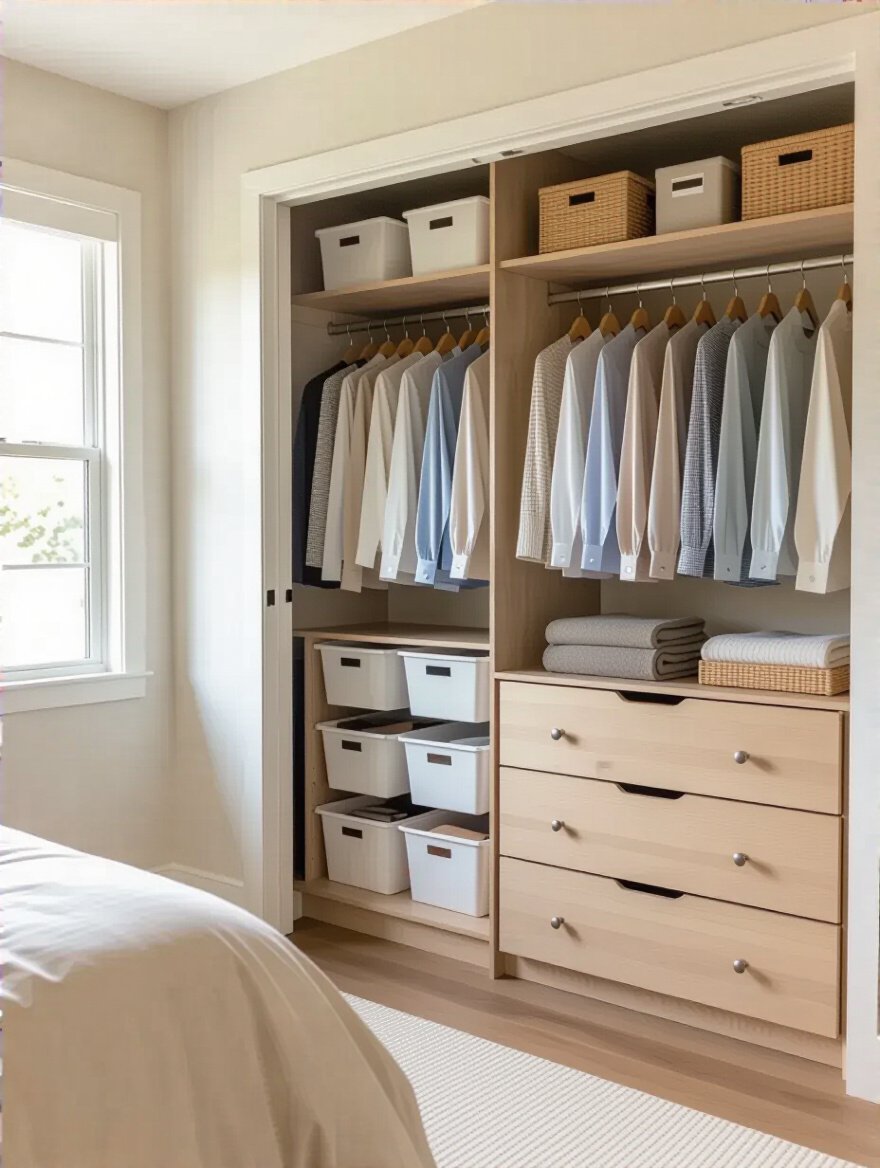
Group everything into families: all the dinosaurs go together, all the art supplies have a party, and all the vehicles get parked in a row. Now you can see it. You don’t just have “LEGOs”; you have two huge tubs of them. You don’t have “books”; you have 15 thin paperbacks and 10 chunky board books. This visual information is gold. You’re not guessing anymore; you’re creating a data-driven plan for a room that actually functions. It’s the difference between a room that looks organized and a room that is organized.
Now that we know what we have, it’s time to create a map for where it all will live.
Think of your child’s room as a little city. Where’s the library? Where’s the construction zone? Where’s the cozy spot for sleeping? “Mapping” the room is about creating a predictable environment, which is one of the most important things for a child’s sense of security. When a child knows, without a doubt, where their things belong, their world feels safe and manageable. This drastically reduces anxiety and cleanup-time tantrums.

Get a piece of paper and sketch out the room’s layout, marking the windows, the door, and the closet. Now, look for the “hidden” real estate. The vertical space above the dresser? Prime bookshelf territory. That awkward corner? Perfect for a cozy beanbag and reading lamp. The space behind the door? Hello, dress-up hook station! I once worked with a family in a tiny apartment who felt completely defeated. By mapping their son’s room, we realized the wall above his bed was a blank canvas. We installed three sturdy picture ledges for his favorite books and models, turning an empty wall into a functional and beautiful display.
With our map in hand, let’s set a “mission” for this new, incredible space.
Forget “storage goals.” Let’s talk about our “peaceful room mission.” What is the number one thing you want to change? Is your mission to “make morning routines tear-free”? Or maybe it’s to “create a calm-down corner for after-school wiggles.” Defining a mission transforms this from a furniture-buying spree into a targeted operation that will genuinely improve your family’s daily life.

Get specific. Don’t just say, “I need to organize the art supplies.” A better mission is: “I will create a system where my child can get out the crayons and paper by themselves and, most importantly, put them away easily.” See the difference? That mission immediately tells you that you need low, open, clearly labeled bins, not a high shelf with a heavy lid. It’s about designing for independence, which is the ultimate goal of any kids’ space. Your child craves mastery over their world, and a well-designed room gives it to them.
Now, for the really fun part: creating the neighborhoods in our little city.
This is the absolute heart of developmental design. Children’s brains thrive on order and categorization. Creating “zones” in their room is like building a mental filing cabinet for them. Instead of one giant playroom, you create mini-environments, each with a clear purpose. This isn’t just tidy; it’s a foundational concept of learning, just like in a Montessori classroom.

Think about the activities that happen in the room. You’ll probably have a “Cozy/Reading Zone” with a soft rug, a comfy chair, and front-facing bookshelves. You’ll have a “Building/Creation Zone” on a durable rug with open bins for blocks and LEGOs. And you’ll have a “Dressing Zone” near the closet with low hooks and drawers they can actually reach. When you tell your child, “Time to clean up!” it’s no longer a vague, overwhelming command. It’s “Let’s put the blocks back in their home in the Building Zone!”—a clear, achievable task.
Every room, no matter how small, is hiding secret pockets of storage. Finding them is like a treasure hunt, and it’s where we get to be really clever to make a space feel twice as big.
The space under the bed can easily become a dust-bunny graveyard, but it’s actually prime real estate. My favorite way to use this for kids is to create a “toy library.” You know how kids get bored with toys, only to fall in love with them all over again a month later? That’s because novelty is rocket fuel for their brains. Instead of having every toy out all the time, store half of them in low, wheeled bins under the bed.

Every few weeks, you can do the “Great Toy Swap.” It’s an exciting event where they get to “check out” new toys from the library. This keeps their play fresh and engaging, and it instantly cuts the visible clutter in the room by half. It’s a magic trick! Just make sure the containers have lids and are easy for you to pull out. You’re creating a system of curated fun, not a hidden hoard of chaos.
From under the floor to behind the door, let’s keep looking for secret spots.
The back of the bedroom or closet door is the most underrated spot in the entire room. It’s a blank canvas just waiting for a job to do! For kids, this is the perfect spot for things they love and use often, but that tend to create clutter. Think dress-up clothes, a collection of baseball caps, or even their library books.

My go-to is a clear, over-the-door shoe organizer. But forget shoes! Use it for small stuffed animals, art supplies, or superhero action figures. Because the pockets are clear, your child can see everything at a glance, which means they’re more likely to play with what they have and—crucially—put it back where they can see it. It’s a visual inventory that promotes independent cleanup. For dress-up, simple wall hooks are perfect. Now the superhero cape has a home that isn’t the floor.
Let’s shrink our focus from the big door to the tiny space right next to the bed.
A child’s bedside table isn’t just a place for a lamp; it’s their command center, their safe haven. This little spot needs to hold all the treasures that make them feel secure at night: a cup of water, their favorite book, a nightlight, and maybe a special rock. But it can quickly become a mess. The goal is to contain the chaos while keeping everything within arm’s reach.

If a traditional nightstand is too bulky, think differently. A small, wall-mounted “picture ledge” is perfect for holding a book and a glass of water. A bedside caddy that tucks under the mattress can hold their flashlight, tissues, and tiny treasures. For a client’s child who was afraid of the dark, we created a “bravery station” in a little caddy with a monster-spray bottle (water), a flashlight, and his favorite superhero figure. It gave him a sense of control and made his bedside nook a powerful, positive space.
Now let’s tackle those weird, seemingly useless architectural quirks in the room.
That weird little nook you don’t know what to do with? Don’t see it as a problem; see it as an opportunity for magic. These architectural oddities are begging to be turned into something special. A deep alcove can become the most enchanting reading nook with a few built-in shelves and a custom-cut cushion. It’s no longer just a wall; it’s a destination.

This is a fantastic place for built-in, floor-to-ceiling bookshelves that can hold books, puzzles, and bins of toys. Because it’s recessed, it doesn’t intrude into the room’s floor space, making the entire room feel larger. By painting the back of the alcove a fun, contrasting color, you turn it into a deliberate design feature. You’re not just storing stuff; you’re creating a focal point that adds personality and value to the room.
From alcoves to 90-degree angles, no space is safe from our smart storage mission!
Corners are where motivation goes to die. They collect dust, stray socks, and maybe a forgotten toy. But we can reclaim them! A tall, skinny corner shelving unit is a game-changer because it uses vertical space that would otherwise be completely wasted. It draws the eye upward, making the room feel taller and more spacious.
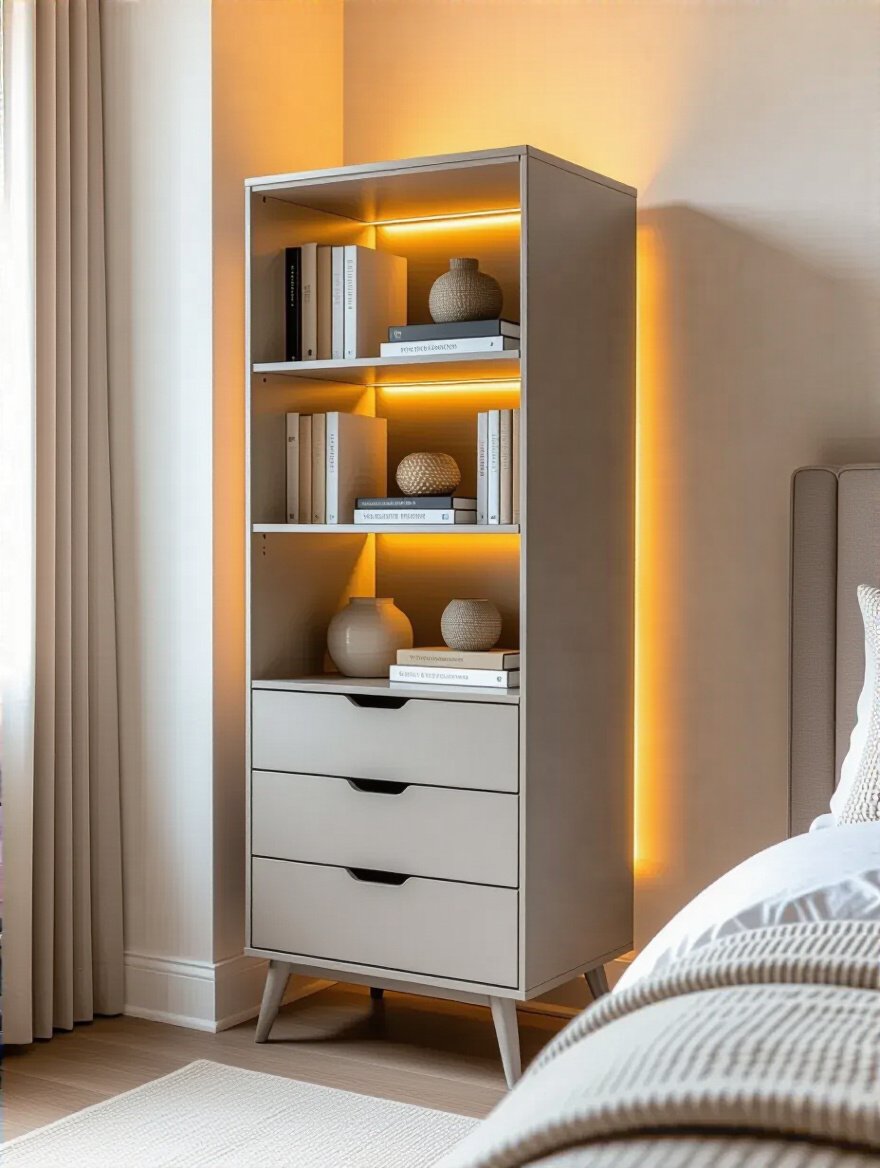
This is the perfect spot for a “display” tower. Use it for things your child is proud of: their LEGO creations, trophies, or beautiful picture books. For younger kids, a corner can become the home base for a play kitchen or a dollhouse. By giving that corner a distinct purpose, you transform it from a dead zone into an active, engaging part of the room’s ecosystem. Just be sure to anchor any tall furniture to the wall—safety is always priority number one.
Why have a bed that’s just a bed? Or a chair that’s just a chair? In a kid’s room, every piece of furniture should be a hard-working superhero with a secret power.
The storage ottoman is, hands down, one of my favorite pieces of furniture for a child’s room. It’s a seat, it’s a footrest, it’s a surface for a tea party… and it’s a magic treasure chest. This is the absolute best place to hide those bulky, awkwardly-shaped toys that don’t fit nicely in a bin, like a giant pile of stuffed animals or a collection of dress-up clothes.
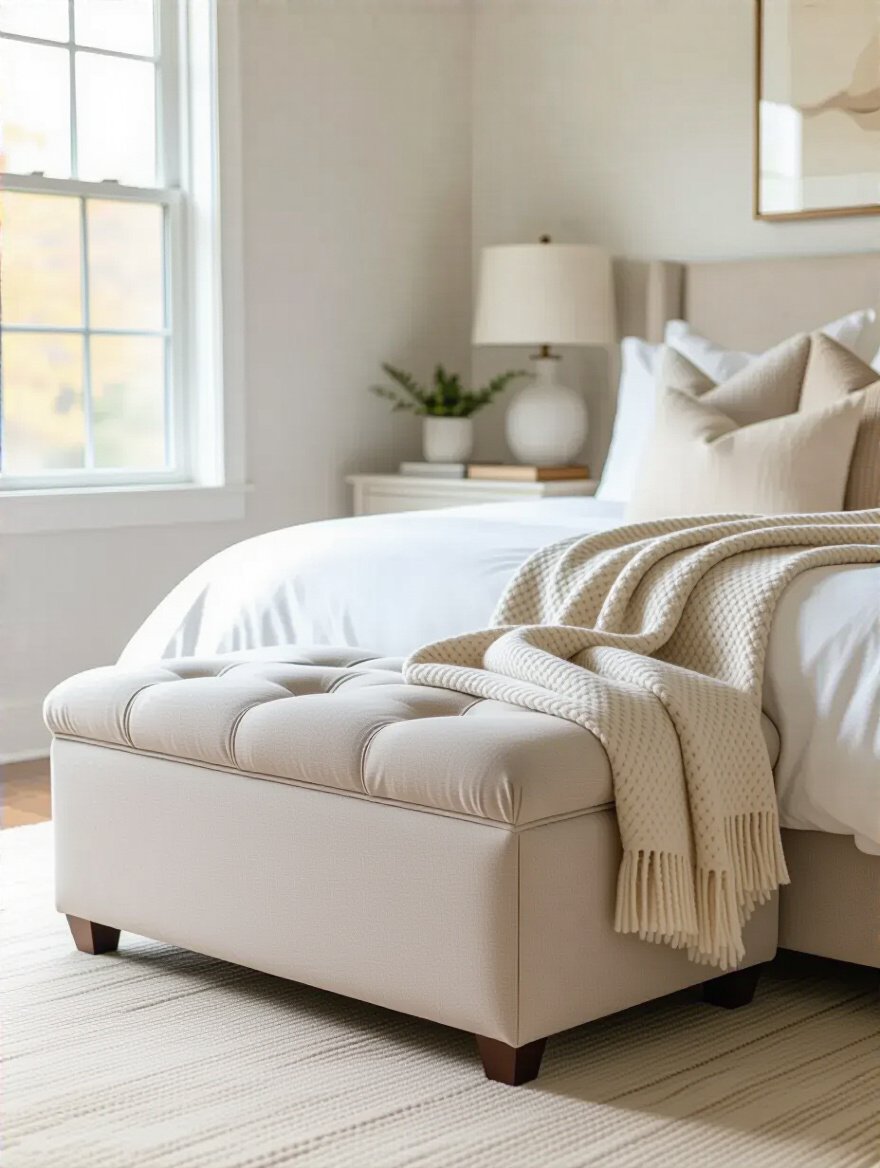
The act of lifting the lid and putting the toys “to sleep” at the end of the day is a wonderful, concrete cleanup ritual for a young child. It’s a game, not a chore. And because the clutter is completely hidden, the room feels instantly calmer and more put-together. It’s the perfect example of furniture that works hard to make your life easier and your home more serene.
From soft ottomans to the hard-working bed itself…
If you’re in the market for a new bed, a captain’s bed with built-in drawers underneath is a brilliant investment. This is so much better than just shoving random bins under a regular bed frame because the storage is integrated, tidy, and incredibly easy for a child to use. These drawers are at their height, making them the perfect tool for teaching independence.
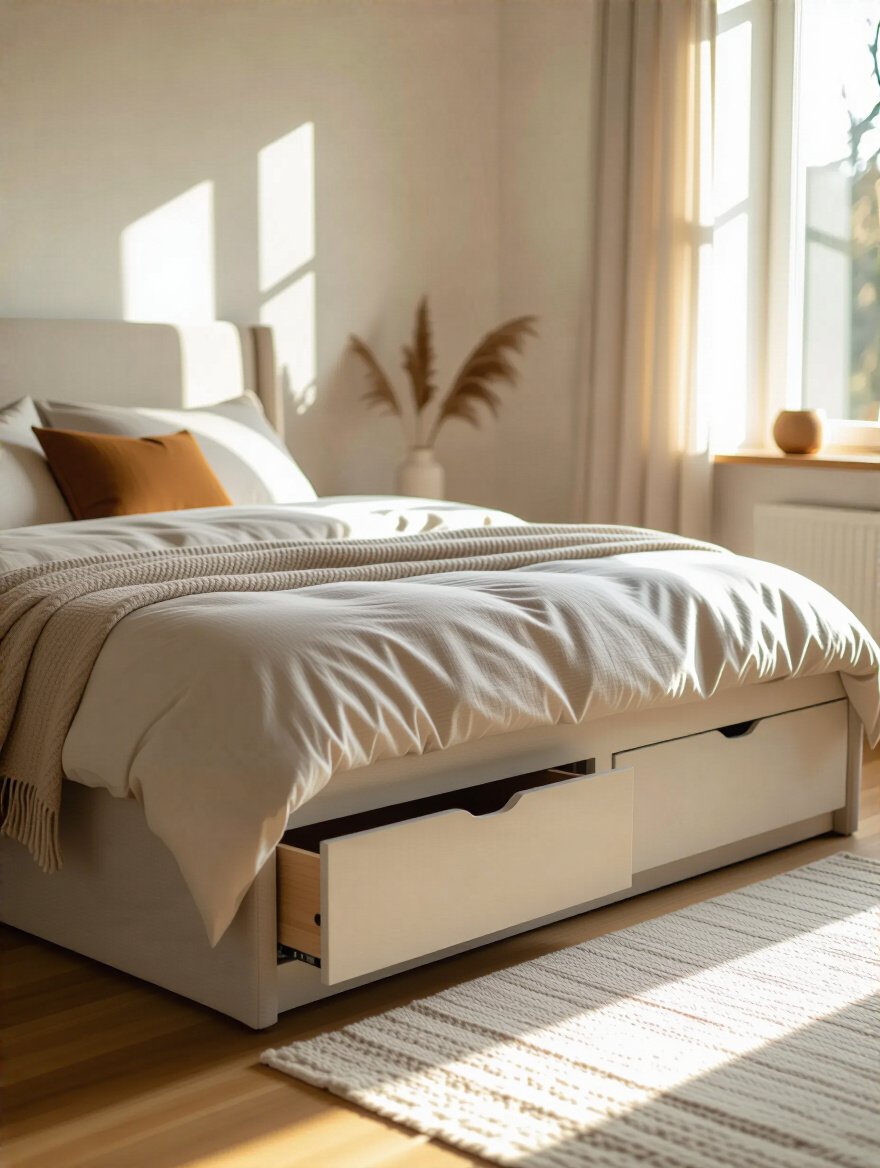
Designate each drawer for a specific category: one for pajamas, one for socks and underwear, one for t-shirts. Add simple picture labels so your pre-reader knows exactly where everything goes. Imagine this: your child can actually get dressed and put their own laundry away without your help. It’s a huge confidence booster for them and a huge time-saver for you. You’re not just buying a bed; you’re buying a system for self-sufficiency.
Let’s zoom in on the furniture right next to the bed.
While open-shelf nightstands can look breezy and cool in a magazine, in a real kid’s room, they are clutter magnets. A nightstand with at least one drawer is a non-negotiable for me. That little drawer is a private, special place for your child to keep their most precious belongings—the polished rocks, the party favors, the secret notes. It gives them a sense of ownership and responsibility.

The drawer is a place to hide the visual clutter—the charging cables, the half-finished comic book, the hand cream—so the surface can stay relatively clear and calming. This helps create a more peaceful transition to sleep. The rule for the top is simple: only the essentials for the night. Everything else lives in the drawer. It’s a simple boundary that makes a huge difference in the overall feeling of the room.
Now for a piece that can live anywhere and do almost anything: the storage bench.
A storage bench is like the storage ottoman’s slightly more sophisticated older sibling. Placed at the foot of the bed or under a window, it provides a perfect spot for sitting and reading a book, tying shoes, or setting out the next day’s outfit. And, of course, its secret identity is a cavernous storage space.

This is my go-to spot for bulky items like extra blankets, pillows, or even big sets of building blocks. Because it’s one large, open space, it’s incredibly versatile. For a family whose son had an enormous collection of Hot Wheels tracks, a storage bench at the foot of his bed became the “garage.” At the end of the day, all the tracks went back into the bench, ready for the next day’s race.
From benches to the ultimate storage classic: the bookshelf.
A bookshelf is essential, but let’s be strategic. For younger children, a front-facing bookshelf is one of the most powerful tools you can have to encourage a love of reading. When kids can see the enticing covers of the books, they are infinitely more likely to pick one up and explore it. It’s a simple change that has a huge impact on early literacy development.

As they grow, you can transition to a more traditional bookcase that combines open shelves for display with baskets or bins for hiding clutter. The key is to mix it up. Use decorative bins to hold things like art supplies or small toys, and leave open spaces to display their favorite books and prized possessions. This combination of open and closed storage keeps the look dynamic and prevents it from feeling like a solid, overwhelming block of stuff.
When you feel like you’ve run out of floor space, the only way to go is up! Your walls are not just for posters; they are an incredible, untapped resource for storage that frees up the floor and makes a room feel so much bigger.
Floating shelves are a designer’s secret weapon because they provide storage without adding any visual weight to the room. They just, well, float! This makes a room feel more open and airy. For kids, these are fantastic for displaying things that you want them to be proud of but maybe not touch all the time.

Think of it as their own personal museum gallery. Use floating shelves to display their most intricate LEGO creations, their favorite collectible figures, or that beautiful clay sculpture they brought home from school. Placing them higher up on the wall keeps them safe from younger siblings and creates a beautiful, personalized focal point in the room. You’re honoring their creativity while keeping the floor clear for active play.
From open shelves to closed cabinets, let’s keep climbing the walls.
Wall-hung cabinets, sometimes called “floating credenzas,” are a brilliant solution for adding a significant amount of closed storage without taking up a single inch of floor space. Seeing the floor continue underneath the furniture is a visual trick that makes the entire room feel larger and more streamlined. This is modern design at its most practical.
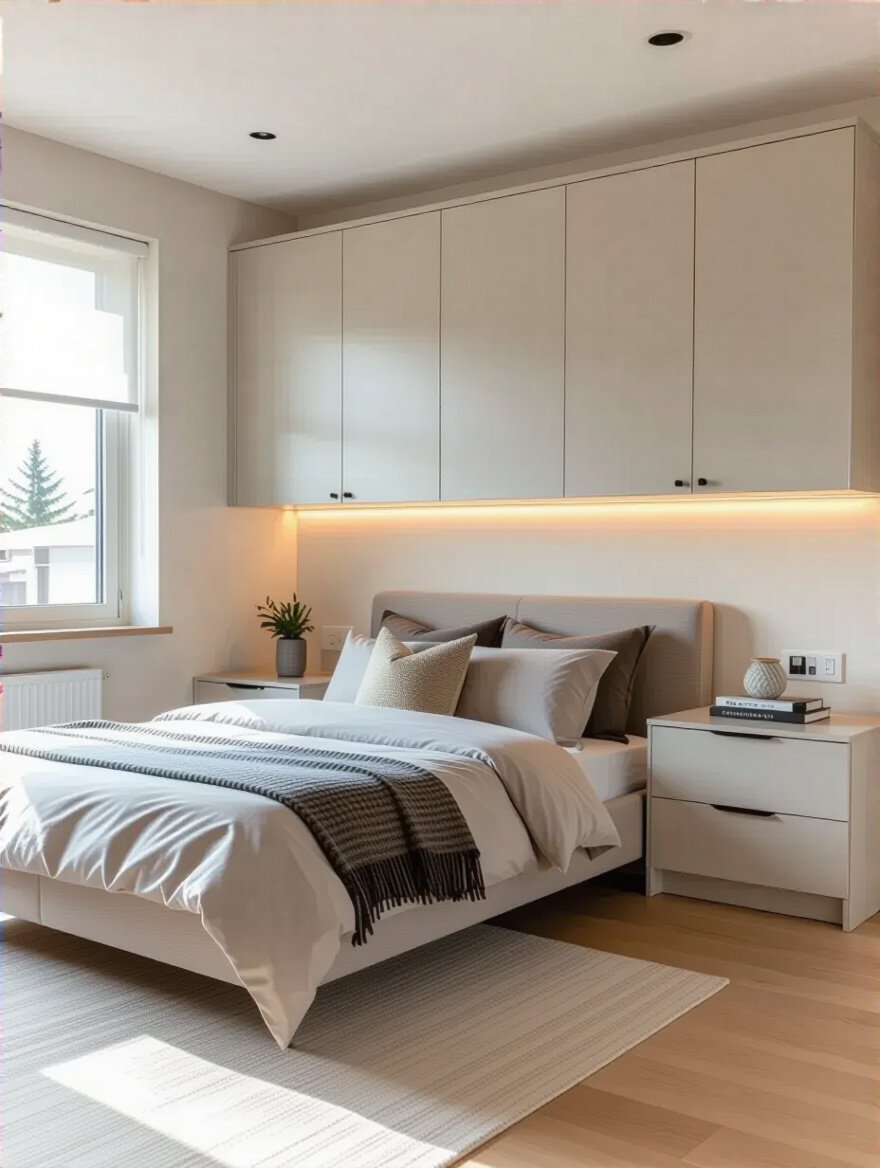
This is a fantastic option for a shared bedroom or a room that needs to function as both a bedroom and a study space for an older child. Wall-mounted cabinets above a desk can hold textbooks, supplies, and electronics, keeping the work surface clear for focus. In a younger child’s room, they are a great way to store things you want to keep out of reach, like paint or board game pieces with tiny parts.
Let’s go back to one of the easiest and most impactful vertical tricks in the book.
I will sing the praises of the over-the-door organizer until the end of time. It is the king of instant, no-tools-required, high-impact storage. A simple, inexpensive pocket organizer on the back of the closet door can solve a dozen different storage problems.

In a kid’s room, it’s a home for Barbie dolls and their accessories, Matchbox cars, hair bows, craft supplies… the list is endless. The clear pockets are key—they allow your child to see their inventory, which encourages play and makes cleanup a simple matching game. You can even label the pockets with pictures for pre-readers. It’s an organizational workhorse that takes up zero floor space.
For a more customizable and interactive wall solution, look no further than the pegboard.
A pegboard is not just for the garage! It is one of the most creative and flexible Storage Solutions for a child’s room. It’s a wall system that can grow and change with your child’s interests. One month, it can hold bins of crayons and hooks for scissors. The next, it can be reconfigured to display their collection of Nerf guns or hang their jewelry-making supplies.

What I love most about pegboards is that they are interactive. Your child can help decide where the hooks and baskets go. This involvement gives them a huge sense of ownership over their space. Plus, hanging and removing items from the hooks is fantastic practice for developing fine motor skills and hand-eye coordination. It’s storage that doubles as a developmental tool.
Finally, the simplest wall solution of all: a few well-placed hooks.
Never, ever underestimate the power of a hook. The dreaded “floordrobe”—that pile of clothes that lives on a chair or the floor—can often be solved with a few, well-placed hooks. The key is to install them at a height your child can actually reach. We want to make it easier to hang up their backpack than to drop it on the floor.

Create a “landing strip” of hooks by the door for their coat, backpack, and library bag. Put a fun, whimsical hook near their dresser for their bathrobe or the outfit they’ve picked out for the next day. By providing an obvious, accessible home for these everyday items, you are building the foundation of a lifelong habit of tidiness. It’s a tiny change that makes a massive difference in the daily battle against clutter.
We’ve tackled the big picture. Now it’s time to zoom in and conquer the chaos that lurks inside closets and drawers. These final touches are what elevate a room from just “tidy” to truly, deeply organized and serene.
Opening a drawer to find a jumbled mess of socks, underwear, and t-shirts is a frustrating way to start the day. Drawer dividers are the secret to turning that chaos into calming order. These simple inserts create a designated home for every single item, making it easy to find what you need in seconds.
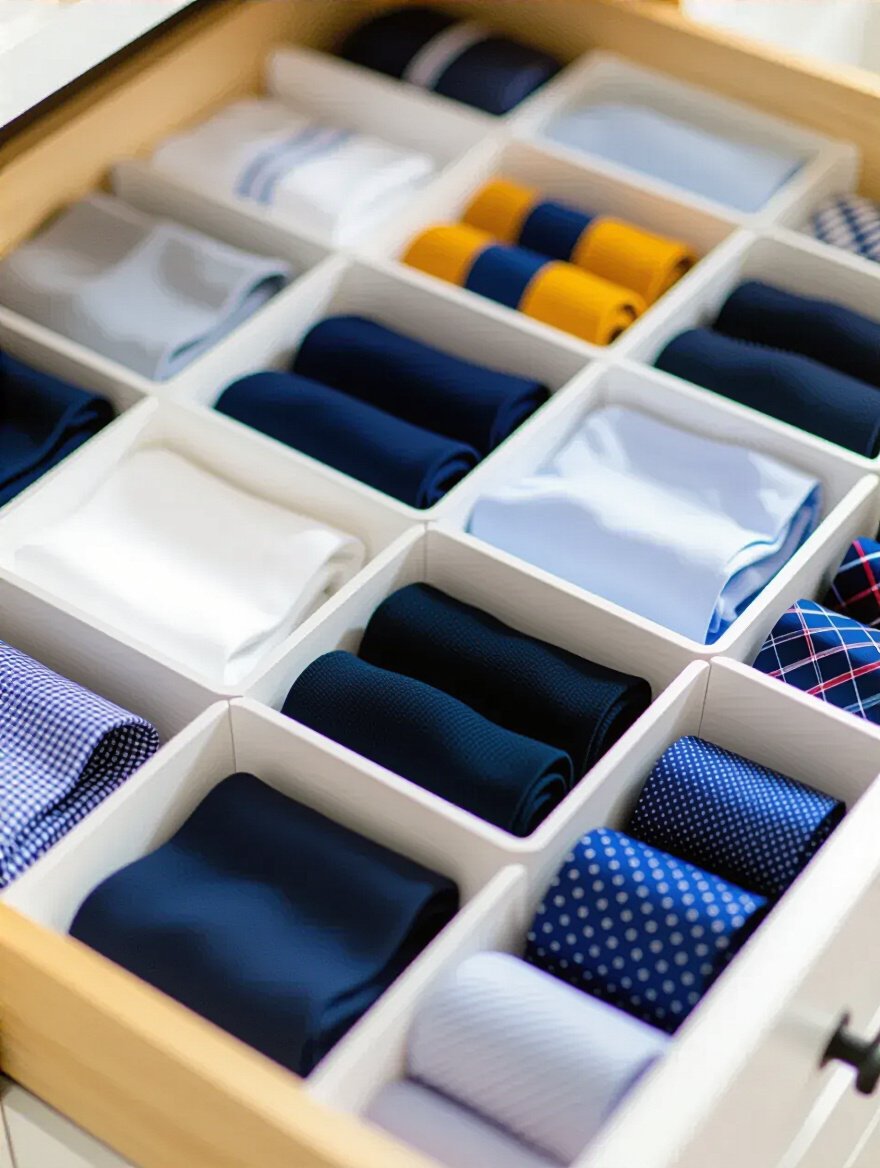
For kids, this is another opportunity to practice sorting and categorization. The sock section, the underwear section, the pajama section—it’s a logical system that their brain can easily understand. I love using honeycomb-style dividers for small items like socks and tights. And here’s my favorite trick: file-fold the clothes vertically instead of stacking them. That way, you can see every single t-shirt at a glance, just like files in a filing cabinet. No more digging to the bottom of the pile!
From drawers to the wide-open space of the closet…
A child’s closet is often a wasteland of inefficiency—a single rod with a pile of stuff on the floor and a high shelf they can’t reach. We can do so much better! The first step is to add a second, lower closet rod that your child can reach themselves. This instantly empowers them to pick out their own clothes and even hang some things up.
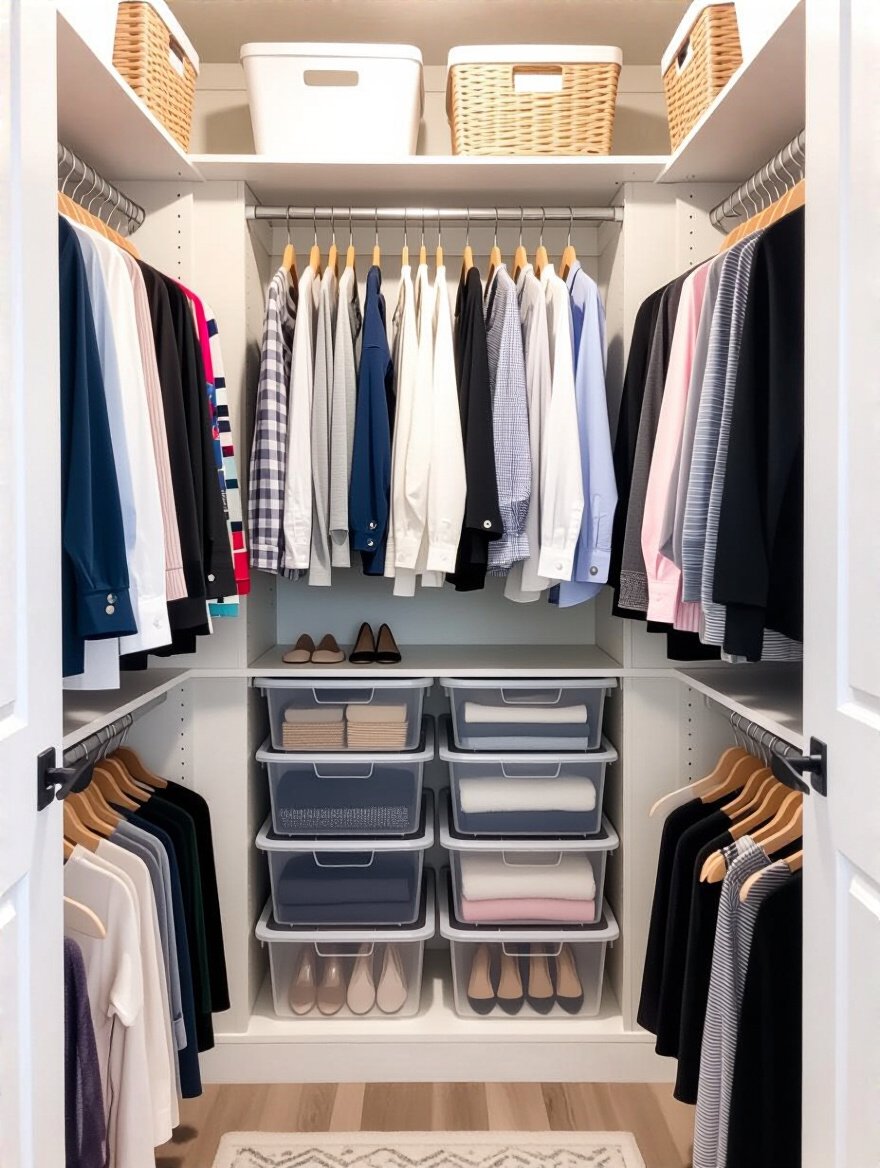
On the floor and the top shelf, use stackable bins to wrangle everything else. Clear bins are great for shoes or toys so you can see what’s inside. For a more stylish look, use matching fabric bins and attach picture labels so your pre-reader knows what goes where. Slim velvet hangers will save a surprising amount of space on the rod and prevent clothes from slipping off. The goal is a closet where every single inch has a job.
Let’s bring some of those bins out of the closet and make them part of the decor.
Storage doesn’t have to be hidden. Beautiful, decorative bins can be a key part of your room’s design while working hard to contain the clutter. A set of matching woven baskets on a bookshelf or a colorful wire bin next to a chair can add texture, color, and personality to a space.

The secret is to make cleanup a game. The wicker basket becomes a “hungry monster” that needs to be fed LEGOs. A soft canvas bin is a “cozy bed” for the stuffed animals. By making the storage itself playful and attractive, you invite your child to participate in the tidying-up process. It feels less like a chore and more like just another part of the fun.
Finally, let’s give those tiny, precious treasures a place of honor.
For a child, “jewelry” might be a collection of candy-colored beaded necklaces, friendship bracelets, and superhero watches. These sentimental items often end up in a tangled mess in a drawer. Vertical storage is the perfect solution to protect these treasures and make them easy to see and choose from.
A simple corkboard with pushpins, a wall-mounted hook rack, or even a small pegboard can become a beautiful display for their collection. It elevates these items from clutter to decor. By giving their precious things a special and organized home, you’re sending a powerful message: what is important to you is important to me, and we take care of the things we love.
So, there you have it. The real path to a beautifully organized kid’s room has nothing to do with buying more stuff. It’s about a fundamental shift in how you see the space. It’s about purging what no longer serves you, creating a master plan, and then choosing smart, hard-working solutions that grow with your child.
An organized bedroom is so much more than a pretty picture for Instagram. It is an environment that actively reduces stress for the entire family. It’s a space that fosters independence, creativity, and a sense of calm in your child. It is, quite literally, a tool for better brain development. This isn’t about perfection; it’s about peace. It’s about creating a haven that supports your child as they learn and grow. Now go pick one idea, just one, and start your mission. Your serene oasis is waiting.